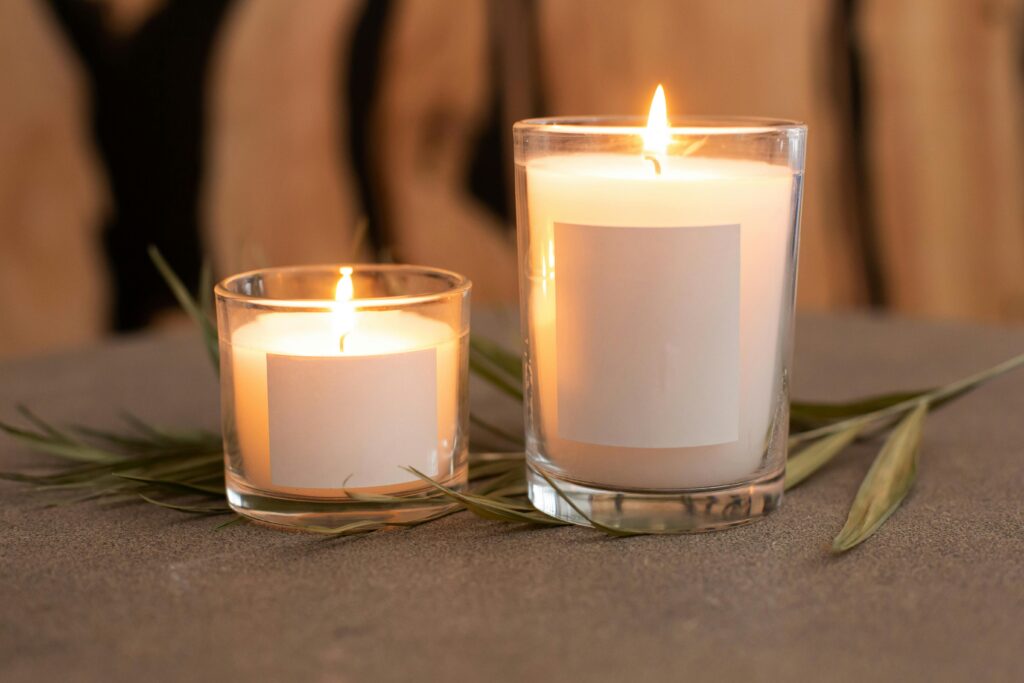
Welcome, curious candle enthusiasts! Whether you’re looking to spruce up your home with a cozy ambiance, dive into the world of crafting your own candles, or simply understand what makes these little wax wonders tick, you’ve come to the right place. Today, we’ll explore everything from the environmental impact of paraffin wax or soy wax (also used when making color crayons!) to health considerations and performance characteristics—basically, all things candle-related.
Let’s start by addressing one big question that often pops up: are soy candles better than paraffin wax? Well, it’s not exactly a black-and-white answer. While both types have their perks, understanding the nuances can help you make an informed choice for your next purchase or project. For instance, if you’re leaning towards natural and eco-friendly options, soy wax candles might just be your jam. But if convenience and cost-effectiveness are more up your alley, paraffin wax has its merits too.
So grab a cup of coffee (or tea—no judgment here), sit back, and let’s dive into the world of candles together. We’ll cover everything from choosing the right wax to burning tips that will keep your home safe and smelling delightful without any unwanted fires!
Environmental Impact of Wax Types
When it comes to choosing the right wax for your candles, think about what you’re lighting up your space with. Paraffin wax is derived from petroleum, which means its production can lead to a fair share of greenhouse gases and other pollutants. It’s like pouring gas into your car; not exactly Earth-friendly.
On the flip side, soy wax is made from soybeans, an eco-friendlier option that’s renewable and biodegradable. Plus, it requires less energy during production than paraffin. Picture this: Soy candles are like growing a little garden in your home, while paraffin is more like burning fossil fuels. Which would you rather have?
If you’re asking yourself “are soy candles better than paraffin?” the answer depends on what matters most to you. If sustainability and reduced environmental impact are high on your list, then soy wax might just be the way to go. But remember, both types of wax have their merits; it’s all about finding the right fit for your values.
Health Considerations in Candle Use
When it comes to choosing the right candle for your home, health considerations are just as important as picking something that looks good on your mantelpiece. The first thing you might wonder is whether paraffin wax candles or soy wax candles are better for your lungs and overall wellness.
- Avoiding Irritants: Paraffin candles can emit soot, which isn’t great if you have allergies or asthma. Soy candles tend to be cleaner burning, but that doesn’t mean they’re completely free of irritants—especially if you’re sensitive to their scent.
- Scent Matters: You know those yummy-smelling scents like vanilla bean or peppermint? They’re not just for the nose; some ingredients used in candle fragrances can be harsh on your sinuses. If you’re prone to headaches, stick with unscented varieties or opt for candles made from soy wax and natural essential oils.
When it comes to choosing between paraffin and soy wax, remember that each has its pros and cons in terms of health effects. Are soy candles better than paraffin? It really depends on your specific needs and sensitivities.
Performance and Burn Characteristics
When it comes to choosing the right wax for your amazing candles, think of it like picking the perfect outfit for a night out—both need to fit just right. Paraffin wax and soy wax each have their unique personalities that can dramatically affect how your candle performs.

Burn Time and Scent Throw
Soy wax candles are often praised for its longer burn time and better scent throw, making it a favorite among fragrance enthusiasts. A soy candle might take a bit more patience to light up the room initially, but once it gets going, you’ll find yourself in a sea of aroma. Paraffin wax candles, on the other hand, tend to burn hotter and faster. If you’re looking for quick satisfaction and a strong scent impact right from the get-go, paraffin might be your go-to. But remember, are soy candles better than paraffin? It really depends on what you’re after.
Candle Appearance and Consistency
Think of wax as the foundation for your candle’s look. Soy wax candles tend to create a softer glow due to its slightly lower melting point, which can give off that cozy, warm vibe perfect for intimate settings. Paraffin wax offers a brighter light because it burns hotter, making it ideal if you need something more energetic and vibrant in your space.

Additionally, soy candles are known for their clean-burn properties—no soot or black smoke residue left behind after use. This makes them a cleaner option not just environmentally but also for maintaining the cleanliness of your home.
Alright to mess up the walls. This is a big thumbs-up for those looking after their home’s aesthetics as well as their health. On the flip side, paraffin wax can leave some residue and create more flicker in the flame, which might be exactly what you’re going for if you love that classic candle vibe.
Cost Implications for Consumers
When you’re shopping around for candles, it’s important to consider the long-term cost implications of your choices. Whether you’re leaning towards paraffin wax or soy wax, each has its unique financial story. Let’s dive into how these options might impact your wallet over time.
The Initial Outlay
Soy candles often come with a slightly higher price tag at the start compared to their paraffin counterparts. This is because soy wax is more labor-intensive and requires additional processing steps, which adds up in cost. However, if you take care of them properly, soy candles tend to last longer than paraffin ones.
Long-Term Savings
If longevity is a priority for you, soy candles can be a savvy investment. They burn slower and more evenly, meaning you won’t have to replace your candles as often. This longevity factor can really add up if you’re someone who keeps several candles lit around the house at any given time.
Frequently Asked Questions
I’ve got a handful of questions that come up like clockwork when folks start talking about candles. Let’s dive into these and clear the air.
Are Soy Candles Better Than Paraffin?
This is one of those classic debates, much like Coke versus Pepsi but with wax instead of cola. Soy candles are often hailed as more eco-friendly because soybeans are a renewable resource and require less processing than paraffin. They also tend to burn cleaner, meaning fewer toxins in the air. However, both types have their perks. Paraffin can hold scent better and be cheaper, so it really comes down to personal preference and your priorities when choosing between paraffin wax candles or soy wax candles.
How Do I Prevent My Candles from Tunneling?
Tunneling happens when you burn a candle without properly melting the wax all the way across. This is like giving your candle a mini moat of unlit wax, which means you’re missing out on all that lovely fragrance and light. The key to avoiding this pitfall? Give your candles plenty of time to create a full melt pool, at least until it’s level with the top edge of the container. This ensures an even burn every time. Here are some more soy candle care tips.
Can I Add Essential Oils to My Candles?
Absolutely, and this is where things get fun! Adding essential oils can turn your candles into a personalized aromatherapy experience. Just be careful not to overdo it—the last thing you want is to have the scent overwhelm your space or cause irritation. A good rule of thumb is to use about 1 ounce of oil per pound of wax, and make sure they’re compatible with the type of wax you’re using (paraffin or soy).
By keeping these tips in mind, you’ll be well on your way to becoming a candle-making maestro. Keep experimenting, stay safe, and most importantly, enjoy the process!

Leave a Reply